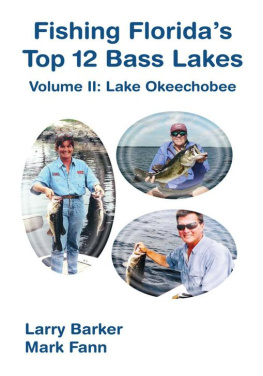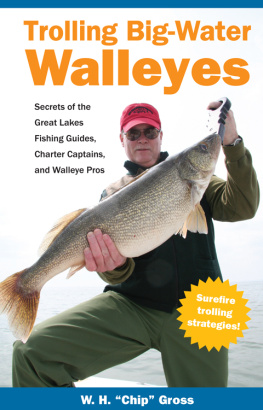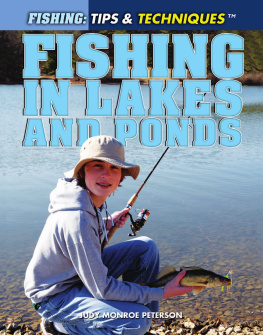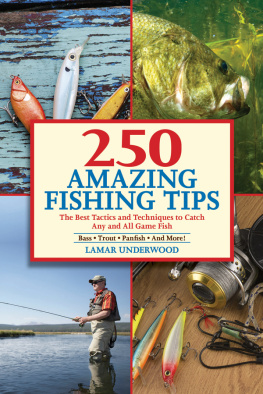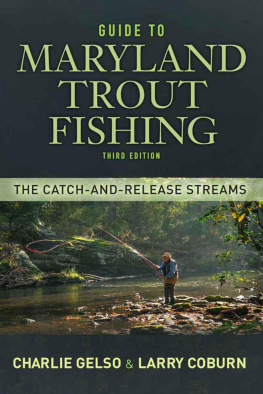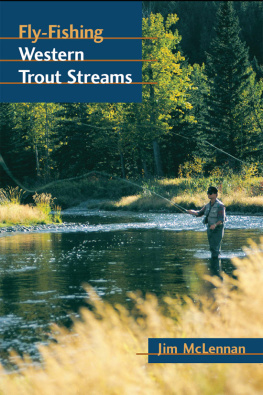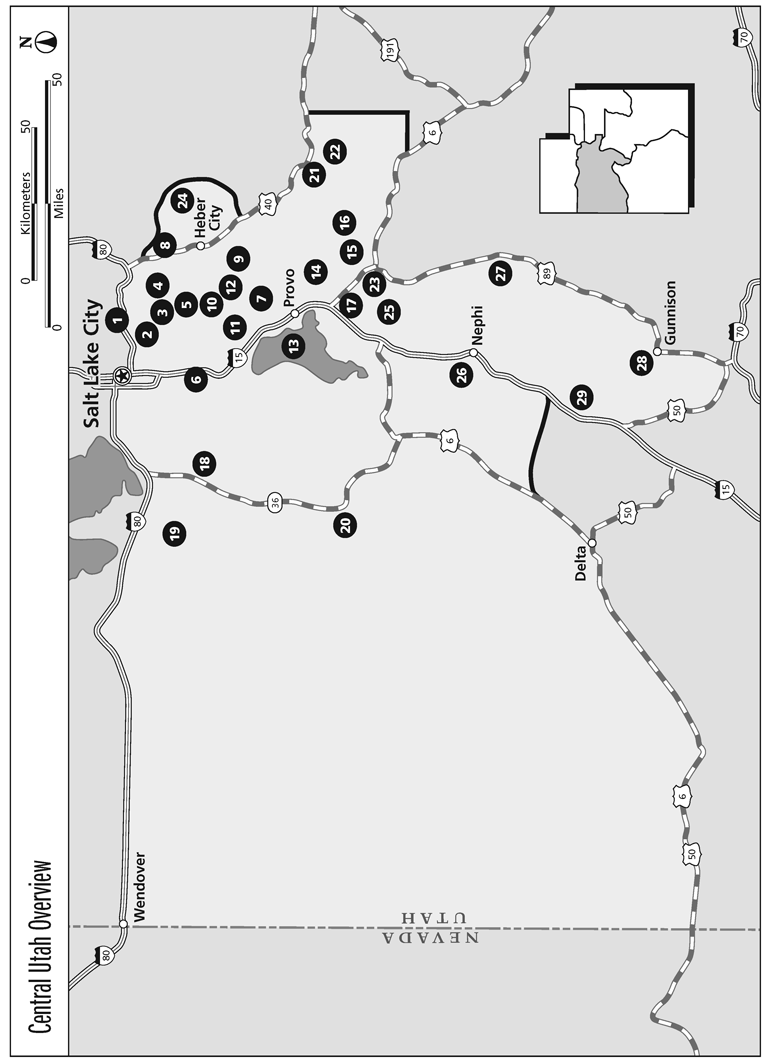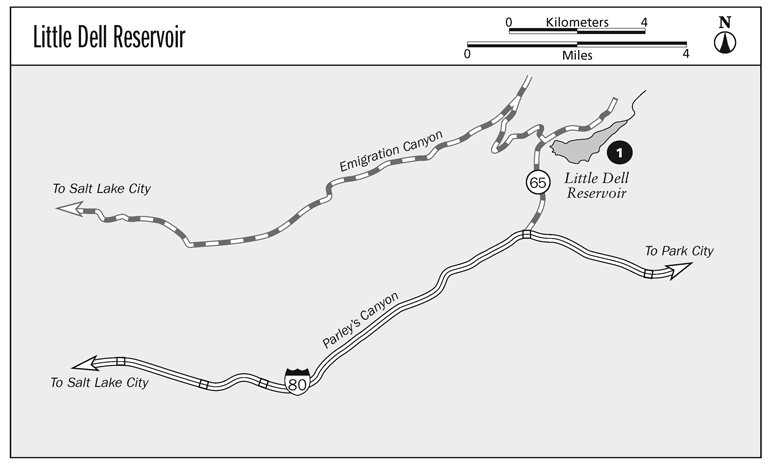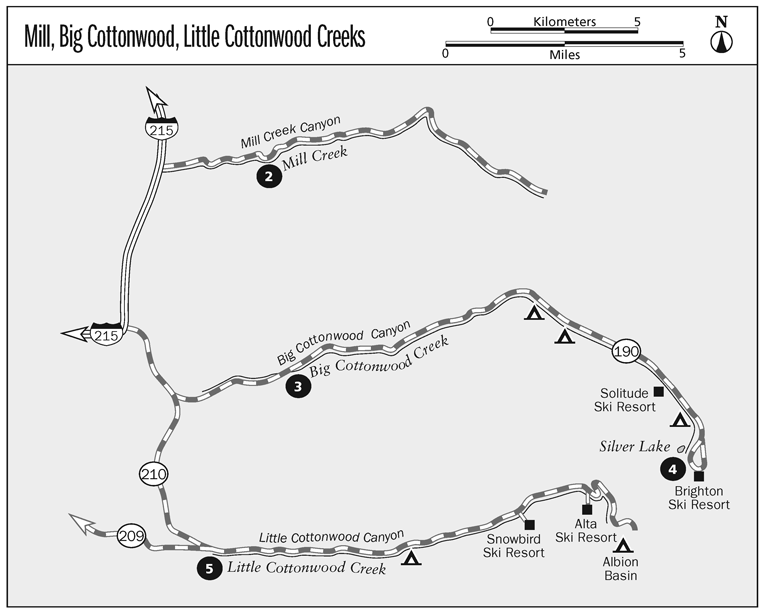About the Author
Brett Prettyman grew up learning to fish on a small stream in central Utah and in the high-elevation lakes of the Uinta Mountains. Trout fishing in these cold waters was Bretts first love. More recently, as an outdoors writer for the Salt Lake Tribune, Brett has traveled Utah, exploring and writing about the countless and diverse fisheries the state offers. He has learned to appreciate the unique opportunities of each of the disciplines of angling and enjoys them all, but a fly rod is the one he reaches for first. Brett lives in Salt Lake City with his wife, Brooke, and their two children, William and Lucie, with whom he finds great pleasure in rediscovering the wonders of angling.
Acknowledgments
More than seventeen years of covering fishing for the Salt Lake Tribune and a lifetime of angling provided just enough information to start this book. The experience of other anglers and the knowledge of the biologists who manage Utah's fisheries make up the rest.
Special thanks goes to Jim Gunderson of Fish Tech Outfitters, who filled in the voids and provided tips on the best ways to catch fish at each location. His name probably should be on the book. Tom Wharton, longtime outdoor editor of the Salt Lake Tribune and a great friend, was also a major contributor.
Fishing buddies Pete Idstrom, Roy Hawk, Ron Colby, Ray Schelble, and George Sommer also provided input. Technical help came from my father-in-law, Larry Barrigar; my mother, Pam Mcleese; and my wife, Brooke.
Employees of the Utah Division of Wildlife Resources, past and present, also deserve much of the credit for the comprehensive detail in the book. The list is long, but they all deserve thanks: Kent Sorenson, Charlie Thompson, Dale Hepworth, Chad Crosbie, Louis Berg, Tom Pettengill, Joe Valentine, Roger Wilson, Steve Brayton, Roger Schneidervin, Wayne Gustaveson, Mike Ottenbacher, Kirk Mullins, Ed Johnson, Craig Schaugaard, Mark Hadley, Scott Root, Don Archer, Paul Birdsey, Richard Hepworth, Ted Hallows, Chuck Chamberlain, Walt Donaldson, Ron Stewart, Lowell Marthe, and Lindy Higham. Thank you to all.
Central Utah
1 Little Dell Reservoir
Key Species:Cutthroat trout and brook trout.
Best Way to Fish: Lures and flies.
Best Time of Year to Fish: Summer and fall.
Special Regulations: Artificial flies and lures only; closed to the possession of cutthroat trout.
Description: A 15-minute drive from Salt Lake City, this 249-acre reservoir does not see as much pressure as might be expected. Special regulations keep most anglers away. Drive up Parleys Canyon on Interstate 80 from Salt Lake, then take exit 134 for Highway 65. Little Dell is about 1 mile to the northeast of the much larger Mountain Dell Reservoir, which is closed to public use. Little Dell was built by the U.S. Army Corps of Engineers, the Metropolitan Water District of Salt Lake City, and Salt Lake County as a flood control and water supply facility. There are 56 picnic tables, 135 parking spaces, and two places to launch boats by hand. Water is not available.
Fishing Index: The catch-and-release and no-bait regulations are designed to protect Bonneville cutthroat trout, a threatened species that has inhabited this water-shed for many years. Because of the protective regulations, Little Dell is seldom stocked with fish and angling can be spotty. The best fishing is where the creek enters the lake. Three-pound cutthroat are not uncommon in the spring. In the early fall, anglers find aggressive brook trout preparing for the spawn. Copper, gold, black, and orange spoons and spinners work well. Fly anglers do well with bright-colored streamers or dark-colored leech patterns.
This fat Bonneville cutthroat trout came from Little Dell Reservoir. Little Dell has special regulations in effect to protect the Bonneville strain, a threatened species native to this watershed. Photo by Larry Mathis
2 Mill Creek
Key Species: Rainbow trout, cutthroat trout, and brown trout.
Best Way to Fish: Bait.
Best Time of Year to Fish: Summer and fall.
Special Regulations: None.
Description: Its proximity to Salt Lake makes Mill Creek popular among recreationists along the Wasatch Front. However, anglers make up a small percentage of the canyons users. The canyon has 12 picnic areas, which make for good places to take the family for an after-work or weekend adventure. A fee is required to enter the canyon.
Fishing Index: The Division of Wildlife Resources (DWR) plants a fair number of rainbow trout in the most heavily used areas. There are also a healthy number of wild cutthroat and some brown trout in the creek. Heavy use keeps bank growth down around the picnic areas, making them a good place to try fly fishing. Dry flies are effective in the summer when the water is clear. Bait is always a good choice.
3 Big Cottonwood Creek
Key Species: Rainbow trout, brown trout, and brook trout.
Best Way to Fish: Bait, spinners, and flies.
Best Time of Year to Fish: Summer and fall.
Special Regulations: None.
Description: Most people only pay attention to Big Cottonwood Creek as they head to Solitude and Brighton ski resorts, or if theyre on a hike in this heavily used Wasatch Front canyon. The creek runs along most of Highway 190. There are five picnic areas and three campgrounds in the canyon. The creek starts at Silver Lake near the top of the canyon.
Fishing Index: Due to large populations of brown and brook trout, the DWR has reduced the number of fish planted in Big Cottonwood Creek. The creek is on the verge of obtaining wild fish status, and one day may not be planted at all. Most anglers fish with salmon eggs and night crawlers, but a growing number of fly fishers are taking advantage of the wild browns and brookies. Shortly after runoff has diminished, the fish key in on stonefly hatches. Try trudes and stimulators at this time. As the water levels off, look for hatches of mayfly and caddis. Parachute Adams, elk hair caddis, royal humpy, renegade, stimulator, and terrestrial patterns will work through the summer. Pheasant tail and prince bead-head nymphs are good wet fly choices. Some big browns inhabit the deeper pools; try Rapalas, spinners, and streamers to catch them.
4 Silver Lake
Key Species: Rainbow trout.
Best Way to Fish: Bait and flies from shore.
Best Time of Year to Fish: Summer.
Special Regulations: None.
Description: At the top of Big Cottonwood Canyon east of Salt Lake City near the Brighton ski resort, Silver Lake has slowly developed into one of the premier urban fishing spots for Salt Lake Valley residents. The addition of a boardwalk to protect marsh and riparian habitat has made this a place for anglers in wheelchairs or parents of young children who want to take them for a nice walk and do some fishing in the process. This is a scenic high-elevation setting surrounded by pine trees and mountain peaks. For a simple family fishing outing, few places near Salt Lake City offer these kinds of amenities. There is also a nearby public campground. The Forest Service, which manages the area, has added some interpretive signs explaining the flora and fauna. There is even a small visitor center where the trail starts.



